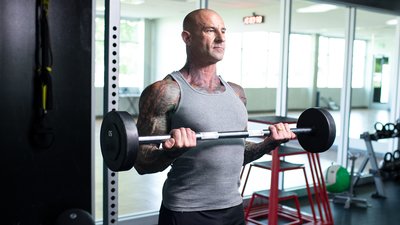Strange as it sounds, one of the most common mistakes made by powerlifters and others looking to maximize strength is that they train too heavy, too often.
Working with big poundage—5-6-rep max weights or heavier—every time you train might make sense in theory for getting insanely strong, but this strategy is more likely to leave you falling short of your PR goals, not smashing them.
Don't get me wrong, heavy sets are necessary for gaining strength, which is why my Shortcut to Strength program features a steady dose of heavy sets of 5, 3, and 2 reps. But I believe the real magic in that program lies in the weekly "Power Focus" workouts (Day 6 in all six weeks).
In these sessions, the weight on all exercises is extremely light, but when you do them with proper rep speed and rep count, your heavy days will start getting heavier.
How Light Weights Lead to Stronger Muscles
Most people use lightweight sets in the gym as a way to burn out the muscles with high reps. Any experienced lifter knows what I'm talking about: Going light on an exercise and banging out 15, 20, 30 (or more) painful reps. This is essentially a hypertrophy (muscle building) technique, and it works well. But it won't do much to boost, say, your bench max.
The light workouts in my strength programs are designed to develop muscular power, not hypertrophy. Strength and power go hand in hand. You can't be powerful without also being strong, yet if you're not working on explosive power in combination with heavy training, your strength ceiling will be pretty low.
Generating maximum strength requires speed. To move big weights on your big lifts (e.g., bench press, squat, deadlift), you need to be able to move the bar fast, particularly in the bottom part of the movement ("out of the hole," as we say with squatting), where biomechanically your muscles are at their weakest. This is exactly why I like programming light power days in my strength programs—to teach your muscles how to move weights faster.
The 5 Keys to Great Power Training
Going light and mindlessly pumping out high reps is not how you build power. It takes a more mindful approach than that. Specifically, you need to optimize the following four training variables for effective power days that lead to bigger 1RMs.
1. Frequency
In Shortcut to Strength, I program one light power day per week. I use this same once-weekly frequency for power training in my Power/Strength/Hypertrophy (PSH) program. You don't want to overdo the light, explosive training; heavy days should definitely outnumber power days when you're trying to build strength. Give your muscles a quick power blast, then let them rest and return to heavy weights.
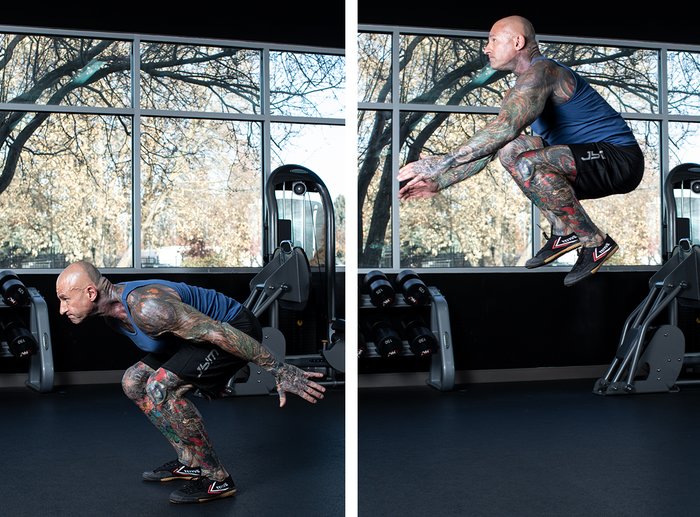
Another option is to add one power move to the start of each strength workout instead. For example, on chest day, start with a power push-up for 2-3 sets of 3-5 reps, then do your normal chest workout. (See Rep Speed below for what power reps should look like.) Likewise, for legs, start your leg day with jump squats. If you train another muscle group in the same workout, start off with a power move for that body part, too.
In the latter scenario, you're doing power training more frequently, but the total weekly volume will be pretty similar to the once-a-week model.
2. Weight Selection
When I'm designing power workouts, the exercises I choose are generally either bodyweight exercises that can be done explosively—for example, bodyweight jump squats and plyometric push-ups—or light free-weight moves. On the weighted exercises, my go-to weight is 50 percent of 1RM (as compared to the 80-95 percent of 1RM weights used on heavy days). On other power-focused exercises, I prescribe a 25-rep-max (25RM) training weight.
These are pretty light poundages, as they should be; going heavier will make your reps slower. To really focus on developing power, you need a resistance that allows you to do the movement quickly and cleanly.
3. Rep Speed
All reps on power days should be performed as fast and explosively as possible. I'm talking so fast that you go airborne on a push-up (plyo push-ups). On barbell and dumbbell exercises, you're not releasing the weight, but you're still moving as fast as possible while maintaining control.
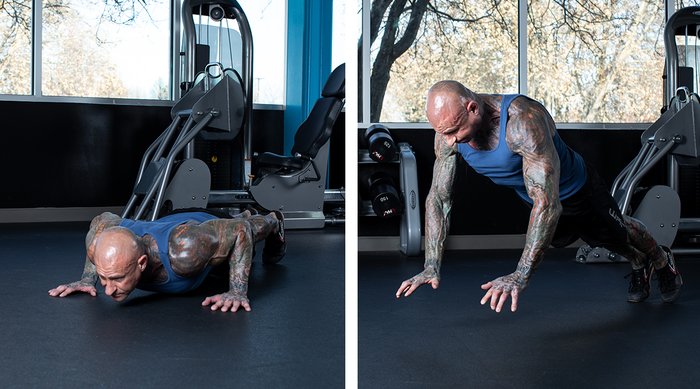
Medicine balls and the Smith machine are also great for power exercises, as they allow you to release the weight at the top of the motion so you're not forced to slow it down. Elastic bands (like my JYM Strength Bands) are also great for power training.
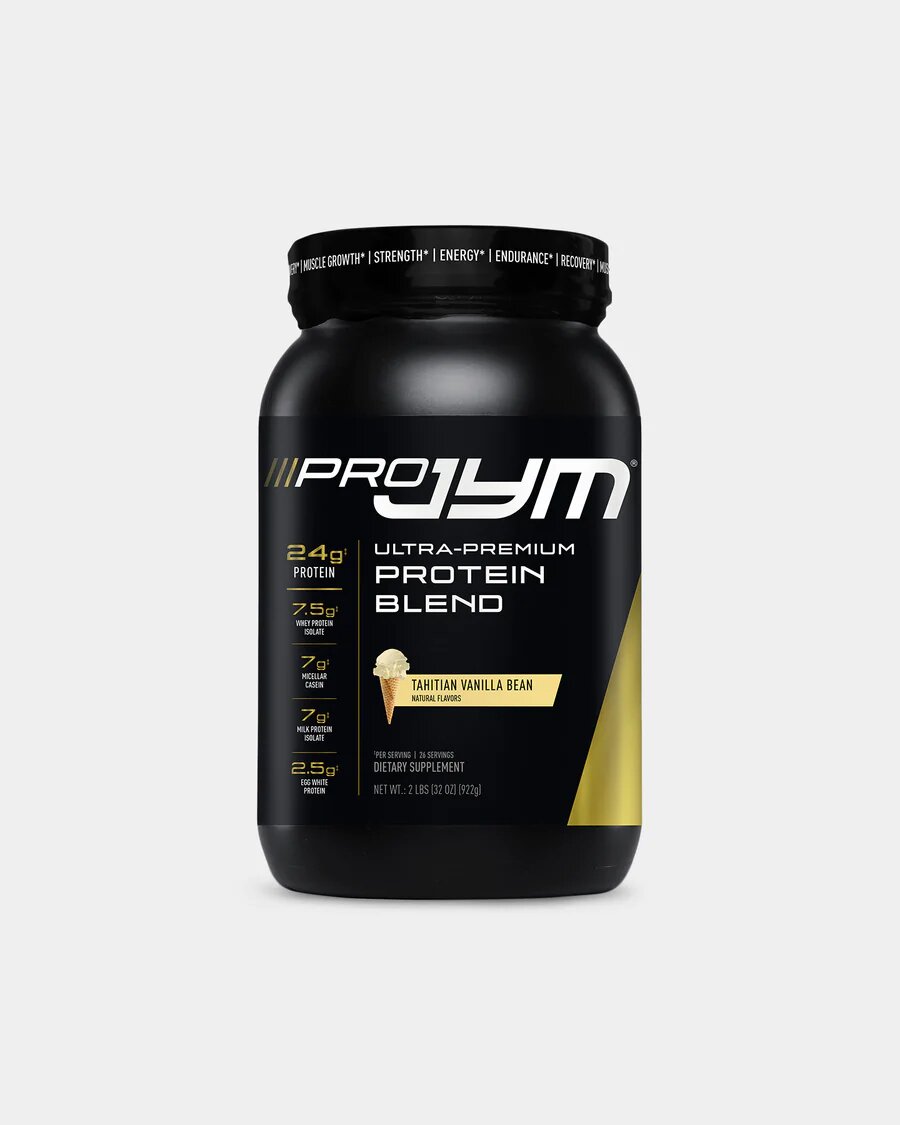
4. Rep Count
Number of reps per set is a critical yet often abused variable in training for power. With the light weight, you may feel tempted to do high reps and fatigue the muscles. Don't do this! Power sets should not be taken anywhere near failure. Once you approach muscle fatigue, your reps will slow down. And the whole point of power sets is to keep rep speed fast. Limit your power sets to 8 reps or less.
Without the muscle burn of a high-rep set, it will feel like you didn't work very hard. Don't worry, that's normal. Remember, fresh muscles produce fast movements.
5. Rest Periods
Your rest periods in power-training workouts should be relatively long for the same reason rep counts are low: You don't want your muscles to be fatigued when doing explosive sets.
Rest 2-3 minutes between all sets when training for power. With low-rep sets ended well short of muscle failure, you may be tempted to shorten rest periods because you feel well rested. Try not to do that. These workouts aren’t for conditioning. To be as explosive as possible on every rep, you need ample rest. The goal with these power workouts is full recovery between sets, not fatigue.
If an exercise calls for 3 sets of 3 reps, don't just do all 9 reps straight through; you may be able to do that and feel fine, but those last several reps won’t be as fast and explosive as the first few, whether you notice it or not.
How to Progress with Power Training
I'm a strong believer in progressive overload and continuing to challenge yourself with higher loads from one phase (or week) to the next as you get stronger. Yet in many of my strength programs, I advise keeping the weight the same on power days throughout. This is mainly due to the fact that many power moves I prescribe are bodyweight exercises (box jumps, lunge jumps, plyo push-ups, etc.) that don't lend themselves to additional loads. And even if other exercises in the same workout are loaded, I don't want to disrupt the pattern and prescribe weight increases for some exercises but not others.
That said, progression is important in a program, so how do you achieve that with power training when you're not increasing weight? Volume. In other words, the number of total reps performed for a given exercise in a workout.
There are two main ways to increase volume on an exercise over the course of a program—through more sets completed or more reps per set. I'll use both Shortcut to Strength and Power/Strength/Hypertrophy (PSH) as examples of how to increase volume on power days over the course of a six-week program.
In Shortcut to Strength, your weekly power workouts incorporate the follow sets and reps (using the same weight throughout) for each exercise:
Shortcut to Strength Power Days Progression
- Weeks 1-2: 3 sets, 3 reps
- Weeks 3-4: 3 sets, 5 reps
- Weeks 5-6: 3 sets, 8 reps
In PSH, the sets and reps look like this:
Power/Strength/Hypertrophy Power Days Progression
- Week 1: 2 sets, 2-3 reps
- Week 2: 3 sets, 2-3 reps
- Week 3: 2 sets, 4-5 reps
- Week 4: 3 sets, 4-5 reps
- Week 5: 2 sets, 6-7 reps
- Week 6: 3 sets, 6-7 reps
As you can see, volume (the total number of reps per exercise) increases from phase to phase (Shortcut to Strength) and week to week (PSH).
With Shortcut to Strength, the progression is a little more straightforward: You stick with 3 sets per exercise throughout and simply do more reps per set in each phase. The volume increases from 9 total reps per exercise in Weeks 1-2, to 15 reps in Weeks 3-4 and 24 reps in Weeks 5-6.
With PSH, I alternate between increasing sets or reps every week—only one variable increases at a time, not both. This ends up creating a "staircase effect," where there's only a significant jump in volume (total reps) every other week. (It's called a staircase because if you were to chart it on a graph, the lines would literally look like stairs.)
For example, if you hit the top end of the rep range on every set, your total reps per exercise will look like this: 6 reps in Week 1, 9 reps in Week 2, 10 reps in Week 3, 15 reps in Week 4, 14 reps in Week 5, and 21 reps in Week 6.
Notice that from Week 2 to Week 3 the volume only increases by one rep, and from Week 4 to Week 5 the volume actually drops by one rep; in essence, volume is remaining the same in these instances.
Then, there are more significant increases from Week 1 to Week 2 (6 reps to 9 reps), Week 3 to Week 4, and Week 5 to Week 6 (14 reps to 21 reps). These may not seem like huge bumps, but we're talking about a 50 percent increase in volume in each spike.
I like the staircase style of programming because the weeks with stagnant volume allow your muscles to adapt and recover, which makes the other weeks that much more powerful and effective.
Power-Training Exercise Menu
Use the above guidelines to put together your own weekly power-focused workout, or follow Shortcut to Strength or PSH and get your power fix that way.
If you plan to do your own programming, I highly recommend you make your power days full-body workouts. Pick one exercise per muscle group and do anywhere from 2-3 sets of 3-8 reps per move. Be sure to keep the weight light (50 percent of 1RM or 25RM) and focus on quality reps: fast, explosive, and technically sound.
Here's a list of great power-focused moves, organized by muscle group. Experiment with different equipment choices. For example, you can do barbell moves with light dumbbells or kettlebells instead. When you do lift with a bar, always keep it light enough to stay explosive.
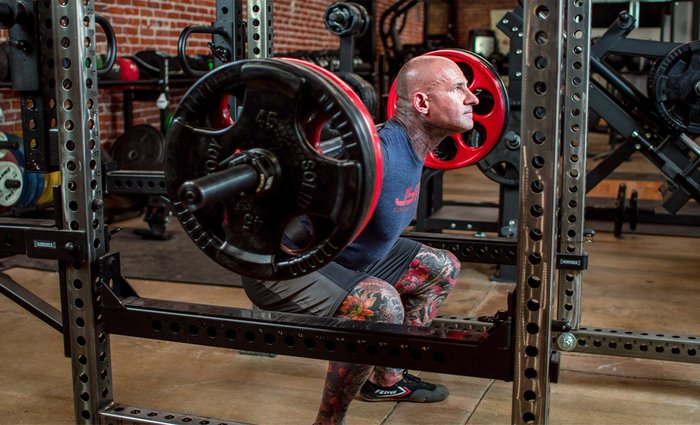
Full-Body
- Power clean
- Dead curl press
- Deadlift
- Snatch
Legs
- Jump squat
- Barbell squat
- Box jump
- Alternating lunge jump
Chest
- Plyo push-up
- Bench press
- Medicine ball chest press throw
- Smith machine bench press throw
Back
- Bent-over dumbbell row
- Dumbbell power row
- Smith machine power row
- Medicine ball lat pull-over throw
Shoulders/Traps
- Push press
- Medicine ball shoulder press throw
- Smith machine overhead press throw
- High pull
- Power shrug
Triceps
- Close-grip bench press
- Medicine ball overhead triceps extension throw
- Smith machine close-grip bench press throw
Biceps/Forearms
- Barbell curl
- Medicine ball biceps curl throw
- Smith machine curl throw
Calves
- Calf jump
- Standing calf raise
Abs/Core
- Power crunch
- Band crunch
- Medicine ball crunch throw
- Medicine ball twist throw
Want unlimited access to all of my programs and an endless supply of content like this? Visit JimStoppani.com and become a member.

